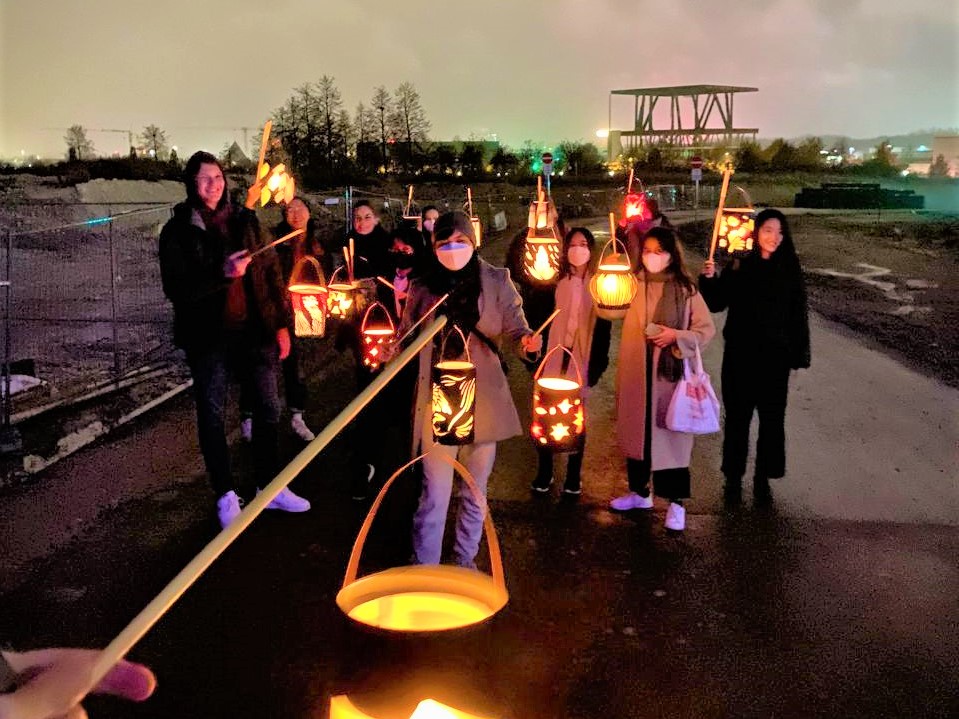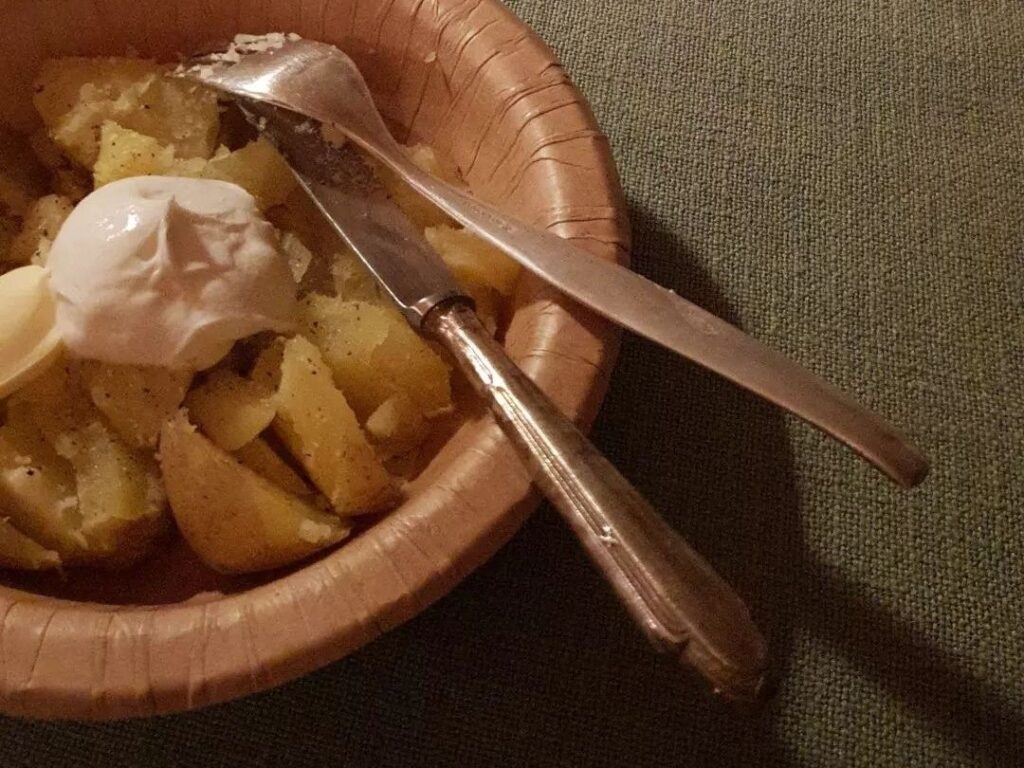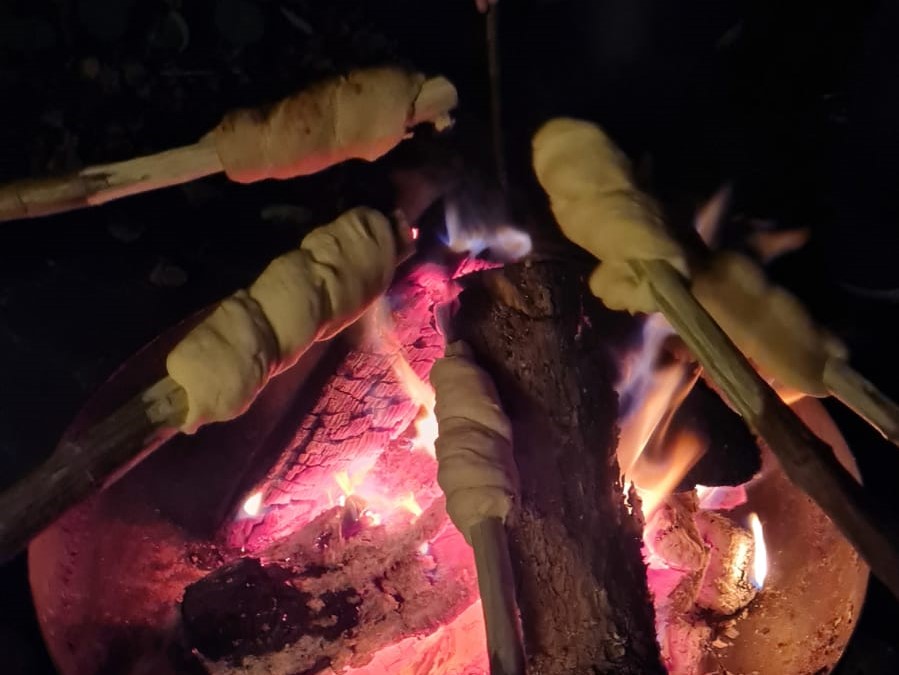Come follow Carissa and her friends’ blazed trail as they honour a German cultural tradition in the heart of a cold winter!
“The days are getting shorter, and it’s getting dark earlier. A nice tradition here is to make lanterns and then walk around with friends in a lantern parade. I invite all international students to do so on Monday. My family is preparing food for you: hot drinks and snacks, gingerbread, and mulled wine.“
Not every day do you receive an invitation to the professor’s house, but this is an actual email sent by Prof. Dorothee Weinlich, the International Coordinator of Faculty III at Hochschule Hannover. As she implied in the email, winter in Germany can be brutal, especially for a tropical human like me. In November, the days are getting shorter to the point that 6 PM feels like midnight. I wanted to know how the Germans cope with the lack of daylight, so I accepted her invitation.

Honoring St. Martin
St. Martin was a 4th-century Roman soldier who was baptized as an adult and became a bishop in a French town. He was known as friend of the children and patron of the poor.[1] Many European countries, including Germany, observe the 11th of November as St. Martin’s Day with their unique celebrations. Laternelaufen (‘lantern walking’ in English) is a German tradition for St. Martin’s Day, where kindergarteners and elementary school students parade the streets holding homemade lanterns. They walk together while singing songs about St. Martin. Some people might compare Laternelaufen with Halloween because the children often go door-to-door to collect sweets.[2]
What’s the correlation between St. Martin and lanterns? No one really knows. One possibility is that there’s an older tradition around this date, and the lanterns remain due to the lack of daylight in autumn and winter. In modern times, some regions of Germany deemphasize the religious aspects but keep the Laternelaufen traditions.[3] As Prof. Weinlich told me, lanterns and candles are essential for Germans to tame the cold and dark winter. When deprived of the sun, people seek warmth from small fires and spend quality time with family and friends.
Our Version of Laternelaufen
The international students’ Laternelaufen was as “warm” as it can be. At 4:30 PM, we gathered in the painting room on campus to create our lanterns. Prof. Weinlich had already prepared all the tools and materials, so it was only a matter of our creativity to finish the task. We spent an hour working on the lanterns while chatting with each other. Close to 5:45 PM, it was already dark, and it started to rain. I prayed to God to keep the rain down low because this lantern parade is a once-in-a-lifetime experience, and I didn’t want it to get cancelled.
God answered my prayer, and we started to parade toward Prof. Weinlich’s house. I wish I could perfectly describe how dark and cold the streets were, but I can only tell you that it was truly a challenge trying to keep the lanterns on. While parading the streets, we had nice conversations about the weather, the university, and our traditions that might be similar to Laternelaufen.

It took half an hour, and we finally arrived at the professor’s house. Her husband and daughter welcomed us with smiles, warm food, and drinks. While sitting down, her daughter opened a large pot that let out thick steam. It revealed hot potatoes, ready to eat on that cold evening. After being content with the potatoes, we had fresh gingerbreads out of the oven. There were also two dispensers on the table; one was the original mulled wine, and the other was the non-alcohol version. We later gathered around a bonfire to roast some dough on a stick. I felt like I was in a Christmas movie I liked to watch growing up.

We had further discussions about winter in Germany; I shared that I had been feeling unwell due to the lack of daylight. The family told me how people in Germany acquire warmth from keeping small fires in their houses. That’s why there are so many candles being sold at the store. German people also like to visit saunas and, more importantly, get the warmth from having a good laugh with their loved ones.
That evening, I came home with new cultural insights and a full tummy.

Created by: Carissa Nuryasmin Putri
Carissa is an Industrial Product Design student at Universitas Trisakti. She did her IISMA exchange at Hochschule Hannover, Germany, where Carissa had the epiphany that good design is interdisciplinary.
References
1. Lessoing, P. (2013, June 7). St. Martin’s Day traditions honor missionary. Kaiserslautern American. Retrieved September 22, 2022, from https://www.kaiserslauternamerican.com/st-martins-day-traditions-honor-missionary/
2. The German Way (2017, November 9). November 11 and the Legend of St. Martin. The German Way. Retrieved September 22, 2022, from https://www.german-way.com/history-and-culture/holidays-and-celebrations/martinstag-and-st-martin/
3. D. C. (2012, November 17). Laternenfest – Lantern Festival. The German Way. Retrieved September 22, 2022, from https://www.german-way.com/laternenfest-lantern-festival/
